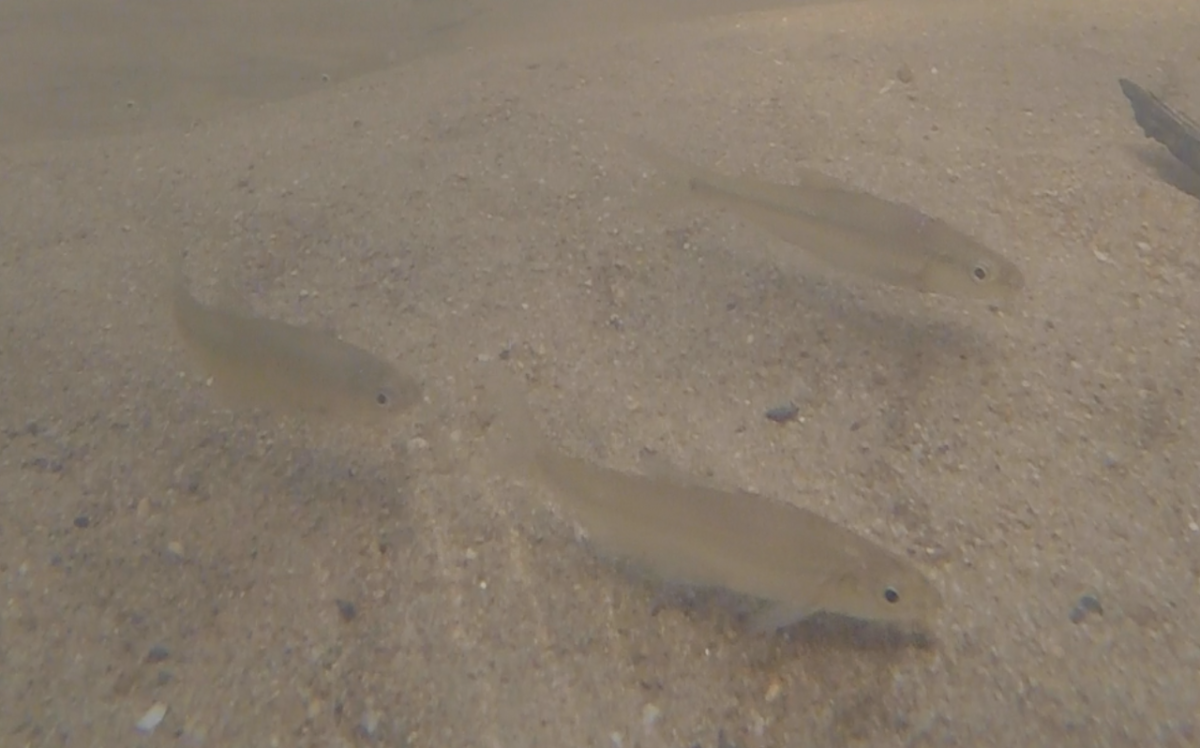Curious about the results of of the 2017 summer undergraduate research? Led by principal investigators Amy Fowler and Kim de Mutsert, the Summer Team Project looked at the effects of micropollutants on the Potomac River watershed. Watch the video to find out what the researchers found and how this experience changed the undergraduates.
Tag: #MasonScience
Micropollutants in the Potomac
- Post author By Chelsea Gray
- Post date February 12, 2018
- No Comments on Micropollutants in the Potomac
Led by principal investigators Amy Fowler and Kim de Mutsert, the Summer Team Project looked at the effects of micropollutants on the Potomac River watershed. Projects were funded by the Students as Scholars at Mason as well as the Patriot Green Fund, and the videos were produced by graduate student, Chelsea Gray, thanks to the Virginia Sea Grant.
A New Way to Study Fish?
- Post author By Chelsea Gray
- Post date November 16, 2017
- No Comments on A New Way to Study Fish?

Written by: Jessie Melton
River herring, Alosa pseudoharengus and Alosa aestivalis, are an anadromous fish species that migrate from marine waters through estuaries to freshwater nurseries in order to spawn and lay eggs. River herring have historically been a valuable commercial species in fisheries, but the stocks collapsed throughout their native region along the Atlantic Coast since the 1990s. The Potomac Environmental Research and Educational Center (PEREC) has conducted an ongoing study of Gunston Cove for the past three and a half decades, and has incorporated the monitoring of river herring population to aid in determining whether or not the moratorium is beneficial to the decline in river herring abundance.
OSCAR student Heather Nortz talks about her summer 2017 research. Led by principal investigators Amy Fowler and Kim de Mutsert, the Summer Team Project looked at the effects of micropollutants on the Potomac River watershed. Projects were funded by the Students as Scholars at Mason as well as the Patriot Green Fund, and the videos were produced by graduate student, Chelsea Gray, thanks to the Virginia Sea Grant.
Are Potomac Fish on Drugs?
- Post author By Chelsea Gray
- Post date November 13, 2017
- No Comments on Are Potomac Fish on Drugs?
OSCAR students Lisa McAnulty and Tabitha King talks about their summer 2017 research. Led by principal investigators Amy Fowler and Kim de Mutsert, the Summer Team Project looked at the effects of micropollutants on the Potomac River watershed. Projects were funded by the Students as Scholars at Mason as well as the Patriot Green Fund, and the videos were produced by graduate student, Chelsea Gray, thanks to the Virginia Sea Grant.
OSCAR student Michael Rollins talks about his summer 2017 research. Led by principal investigators Amy Fowler and Kim de Mutsert, the Summer Team Project looked at the effects of micropollutants on the Potomac River watershed. Projects were funded by the Students as Scholars at Mason as well as the Patriot Green Fund, and the videos were produced by graduate student, Chelsea Gray, thanks to the Virginia Sea Grant.
What Can a Fish’s Diet Tell Us?
- Post author By Chelsea Gray
- Post date November 10, 2017
- No Comments on What Can a Fish’s Diet Tell Us?
OSCAR student Sammi Alexander talks about her summer 2017 research. Led by principal investigators Amy Fowler and Kim de Mutsert, the Summer Team Project looked at the effects of micropollutants on the Potomac River watershed. Projects were funded by the Students as Scholars at Mason as well as the Patriot Green Fund, and the videos were produced by graduate student, Chelsea Gray, thanks to the Virginia Sea Grant.
Cindy Smith’s Human Dimensions and Biomes class (EVPP 302) was highlighted recently in Mason Spirit.
She found that some environmental science and biology majors were having difficulty finding jobs without a graduate degree. Looking for answers, she surveyed 10 employers and found that what they wanted most was were employees who had worked on “real” research projects and had “real” field experience. So she reworked the course to include an energy audit of a campus building, which is conducted in partnership with Mason’s Offices of Sustainability and Facilities….
“One of the best parts about my job is the interaction with the students during plant tours—and getting new ideas from them that we can possibly use to save energy,” says Jeffrey Counts, superintendent of the heating and cooling plant in Facilities Management.
Read the rest here.
Water: A Fish’s Pharmacy
- Post author By Chelsea Gray
- Post date July 31, 2017
- No Comments on Water: A Fish’s Pharmacy
Written by: Tabitha King

What if I told you fish could potentially be ingesting caffeine, pain medicine, and other pharmaceuticals on a daily basis? You may be wondering how this is possible since fish do not regularly visit the pharmacy to pick up their prescriptions. However, there is a growing concern amongst scientists and other stakeholders that the very medications we are taking (even common allergy relievers) are not being removed during wastewater treatment. Current regulations placed on wastewater treatment plants do not require the removal of such substances. To make matters worse, if a treatment plant was to take on the task of removing pharmaceuticals from their customers’ sewage, there are new compounds made on a daily basis. Each chemical would require a unique form of effective removal to ensure at least a majority is removed before treated water is discharged into local waterways. It is currently not known at what amounts of these medications are making their way into our local waterways and accumulating in aquatic organisms and sediment.
